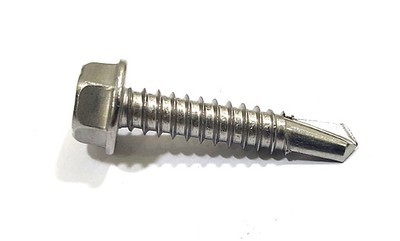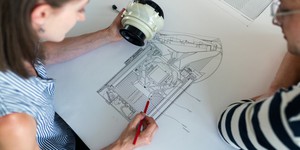Abstract
When you think of a machine, you probably think of computers or robots. But what if I told you that machines have been around for centuries? Would you believe me? Try this experiment to see which of these simple machines you use around your house. You might even use some of them everyday!Summary

Objective
In this experiment you will search for simple machines used in your daily life and categorize them to see which types of simple machines you use most often.Introduction
When you have work to do, isn't it nice to have a machine do it for you? Machines make work easier by reducing the amount of effort it takes for you to do a task. Machines change the size or direction of the force required to do the task, called an applied force. The applied force causes an amount of work to be done, and the machine reduces the applied force needed to do the same amount of work saving you the effort. The amount of effort saved when using simple or complex machines is called a mechanical advantage (MA). For example, you can move a larger object by using a lever than pushing on the object by yourself because it takes less effort, like when you use a car jack to lift a car and change the tire.
Simple machines are types of machines that do work with one movement. There are 6 simple machines:- lever - rod that tilts on a pivot, or fulcrum, to produce a useful action at another point. Examples: pliers, seesaw, wheelbarrow, nail clippers, tweezers.
- inclined plane - sloping surface; it reduces the effort needed to raise loads. Example: ramp.
- screw - shaft with a thread or groove. The screw holds things together by turning and moving into surrounding material. Some gears work with a screw-like motion. Examples: boat propellers and corkscrews.
- wheel and axle - device that turns around a fixed point to act as a rotating lever. Examples: steering wheel, faucet, wrench tightening a bolt, bike wheels, water wheel.
- pulley - grooved wheel that turns on an axle over which a rope, chain, or belt passes. The groove fixes the rope or cable so that it won't slip off. Examples of pulleys in action: stage curtain, elevator, outdoor clothesline.
- wedge - part of a machine with a sloping side that moves to exert force. It differs from the inclined plane by its function: the wedge forces itself between other parts. Nearly all cutting machines make use of the wedge. Examples: scissors (blades act as paired wedges), door wedge, ax, wood chisel.
Sometimes, one simple machine is not enough to complete a task. A series of simple machines can be put together in order to accomplish more complex tasks. Compound machines are two or more simple machines working together. A wheelbarrow is an example of a complex machine that uses a lever and a wheel and axle.
In this experiment, you will search for simple machines used around your house. You will categorize them according to which type(s) of simple machine(s) they are made up of. Which type of simple machine will be the most common?

Figure 1. A screw, one of the six types of simple machines.
Terms and Concepts
To do this type of experiment you should know what the following terms mean. Have an adult help you search the internet, or take you to your local library to find out more!- Lever
- Inclined plane
- Screw
- Wedge
- Pulley
- Wheel and axle
- Work
- Force
- Energy
Questions
- How do simple machines work?
- What simple machines are in gadgets around my house?
- How are the elements of simple machines used together to perform a task?
- Which type of simple machine is the most common at my house? The least common?
Bibliography
- This site has some excellent photos of the basic simple machines:
MOS, 1997. Inventor's Toolbox: The Elements of Machines, Museum of Science and The Science Learning Network. Retrieved February 3, 2007. - This project was adapted from this classroom activity:
MOS, 1997. Classroom Activity: Sketching Gadget Anatomy, Museum of Science and The Science Learning Network. Retrieved February 3, 2007. - Have fun browsing through this site dedicated to the INVENTIONS of Rube Goldberg, whose cartoons are a humorous reminder that simple machines which do simple tasks don't have to be simple at all! Really, do check out the artwork:
Kennedy, L. 2007. "Rube Goldberg," Rube Goldberg Inc. Retrieved February 3, 2007.
Materials and Equipment
- Paper
- Pencils with erasers
- A selection of small machines with visible working parts (the more you have, the better):
- Egg beater, cork screw, car jack, can opener, garlic press, tongs, monkey wrench, hand drill, Vise-Grips, the mechanism from a music box, wind-up toy, pencil sharpener, stapler, etc...
Experimental Procedure
- Do your background research to be sure that you know what simple machines are and look like. In addition to the reference in the bibliography, you can do your own web search to see pictures of the different types of simple machines.
- Search around your house for gadgets that are built using one or more simple machines like those listed in Materials and Equipment.
- For each gadget you find, determine which simple machines are used to make it work. Here is an example of how to use a data table to collect this type of information:
| Gadget Name | Lever | Inclined Plane | Screw | Wedge | Pulley | Wheel & Axle |
| Corkscrew | X | |||||
| Bottle Opener | X | X | ||||
| etc... | ||||||
| Number Found |
- As you look at the gadgets and try to figure out which simple machines they are made out of, it might help to draw them. Making a mechanical drawing can help you to visualize all of the parts of a gadget and how they work. Place the gadget at rest so that you can see all of the parts. Begin sketching diagrams of the machines you see in the gadget. Draw the gadget from one point of view first, and then draw it from different points of view to show all working parts. When the diagram is complete, add arrows and written notes to indicate directions of motion for each part, label the elements of machines involved, and explain connections.
- Now add up the number of examples for each type of machine in your data table.
- Make a bar graph of your data. On the left side of the graph (y-axis) make a number scale for the number of gadgets found. On the bottom of the graph (x-axis) write down the six different types of simple machines. Draw a bar up to the number of gadgets that you found for each type of machine.
- Analyze your data. Which simple machines were in the most gadgets? The least?
Ask an Expert
Global Connections
The United Nations Sustainable Development Goals (UNSDGs) are a blueprint to achieve a better and more sustainable future for all.
Variations
- Take this a step further by improving upon one of the gadgets you found. Can you think of a way to make it work better, or to expand it's function? Make before and after mechanical drawings of your improvements and you could be on your way to a patent!
- Do you have ideas for your own gadgets? See if you can use the concept of simple machines to invent something new. Think about problems that you have around the house doing something. Can you design a machine to do it for you? Again, a good mechanical drawing is important for communicating your idea. You should also build a prototype.
- Can you design a useless invention? A famous cartoonist named Rube Goldberg made cartoons of long, tedious inventions that used many steps to do a simple task. Can you design your own Rube Goldberg machine? If you are in high school, you can even enter to win the annual Rube Goldberg Machine Contest (RGMC).
Careers
If you like this project, you might enjoy exploring these related careers:









